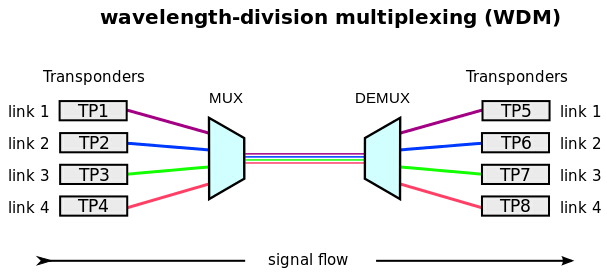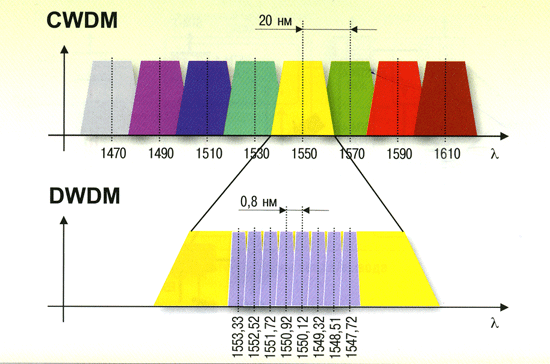In order to increase the transmission distance of optical signals, many technologies, like the TDM (time division multiplexing) and WDM (wavelength division multiplexing), have been used. Except for that, several optical components like single mode fiber optic cables, optical amplifiers and dispersion compensating modules (DCMs) are also put into use to realize the goal. Today, this article intends to illustrate the solutions to achieve longer transmission distances with DWDM technology.
When it comes to long-haul optical transmissions, DWDM (dense wavelength division multiplexing) is a topic that cannot be ignored. DWDM technology enables different wavelengths to transmit over a single optical fiber. Different wavelengths are combined in a device—Mux/Demux which is short of multiplexer/demultiplexer. The DWDM Mux/Demux provides low insertion loss and low polarization-dependent loss for optical links. Here take a 8CH DWDM Mux/Demux for example to illustrate how to extend distance in long haul transmission.
The first solution is suitable for applications that are less than 50km. The picture below shows a unidirectional application with 8CH DWDM Mux/Demux. As we can see, in this links, the DWDM Mux/Demux transmits 1550nm signal over one single mode fiber. The eight different signals from the transmitters are multiplexed into 1550nm signal by the 8CH DWDM Mux. Then they go through the single mode fiber and are separated into the original wavelengths by the DWDM Demux. The use of DWDM Mux/Demux and single mode fiber allows the system to transmit over 50km without optical amplifier or DCM.
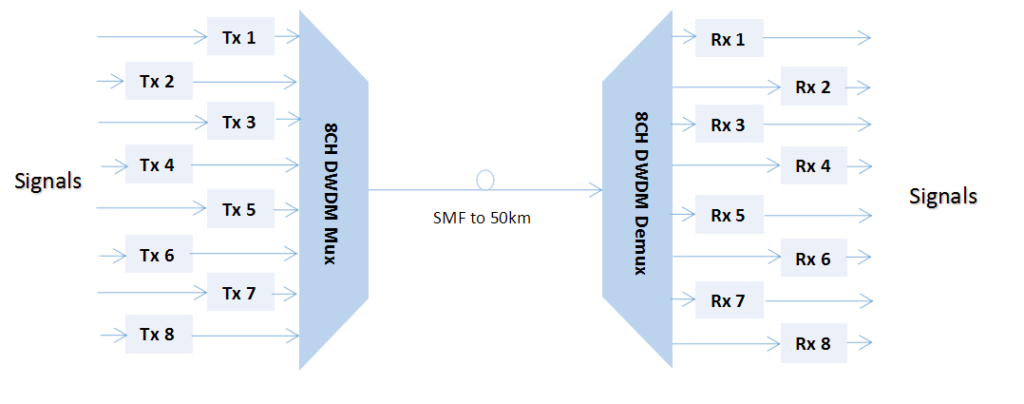
Notes: this solution is the basic application of DWDM Mux/Demux in a relative long distance comparing to CWDM technology which suits short distance deployment.
Different from the first solution, if the link distance is longer than 50km, this solution can be taken into account. Optical signal loss will become greater as the links are getting longer, which means an optical amplifier module or dispersion compensator is needed. Therefore, to achieve a satisfying signal quality in long-distance transmission, an EDFA which can boost the weakened optical signals is added in this solution (as shown in the picture below).
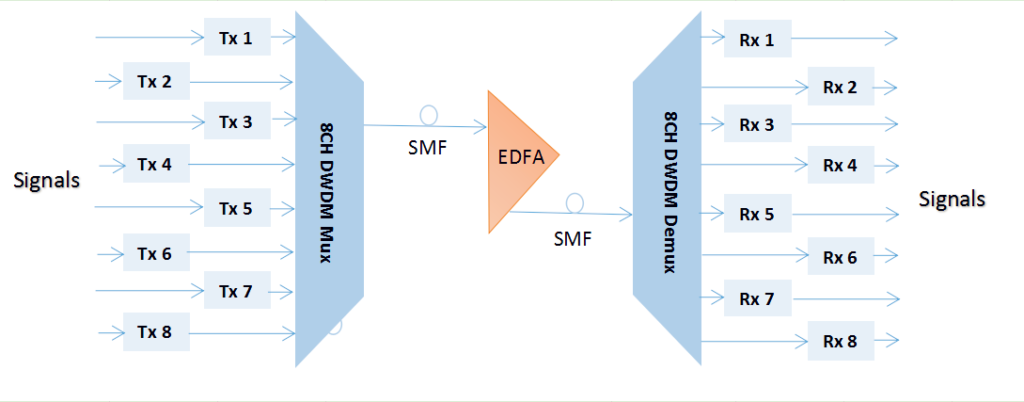
This DWDM configuration is similar to the former one, but with the EDFA, the link distance on the single mode fiber is up to 200km. However, sometimes an EDFA is not enough to achieve a quality signal, especially in some long haul systems like CATV system. Because these systems often have a high requirement for the quality of optical signal. Therefore, as we can see in the following picture, except for the DWDM Mux/Demux and EDFA, there is also a DCM.
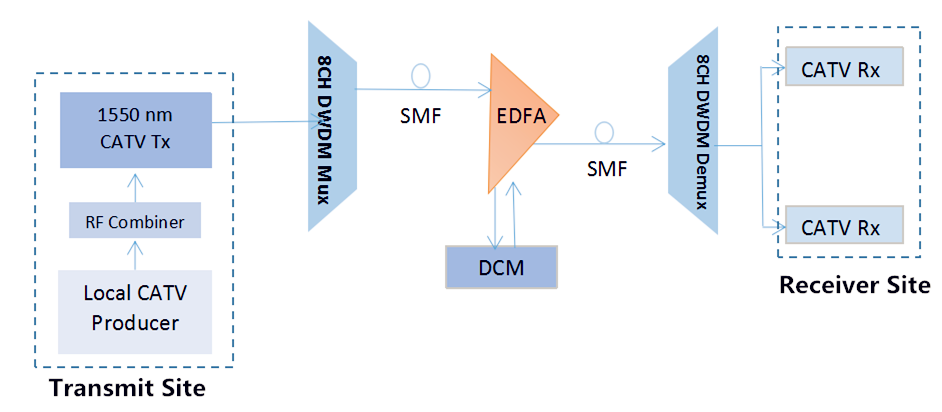
This solution is a point-to-multipoint long haul system deploying a DCM to extend the transmission distance. From the picture, the EDFA is placed midway between the transmitter and receiver in the transmission path. And in order to ensure the quality of the whole transmission, a DCM module is added in this link to deal with the accumulated chromatic dispersion without dropping and regenerating the wavelengths on the link.
Notes: all the three solutions are unidirectional transmission on single mode fiber cables. If a network requires bidirectional transmission to transfer eight signals, you can use a 16CH DWDM Mux/Demux over single fiber or a 8CH DWDM Mux/Demux over dual fiber.
WDM technology, especially the DWDM, is the critical step to go into the super-long distance transmission in optical communication. This post mainly introduces three basic solutions to realize long haul transmission with DWDM Mux/Demux. All the components including the DWDM Mux/Demux (both 8 channels and 16 channels), EDFA, DCM and optical modules are available in FS.COM. If you have any needs, please contact us via sales@fs.com.

